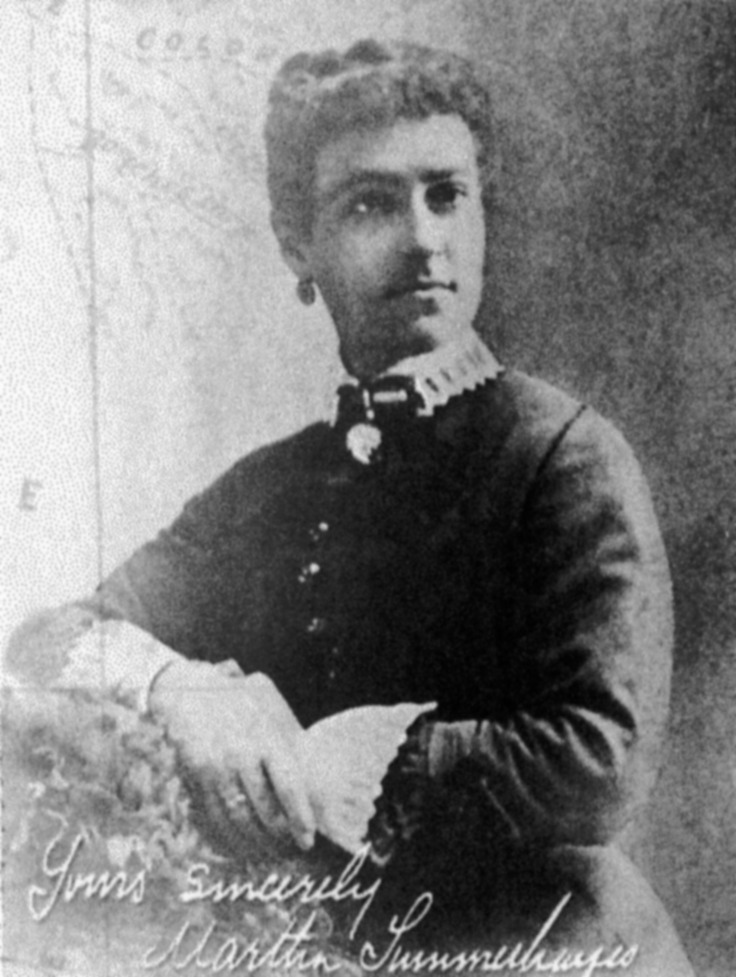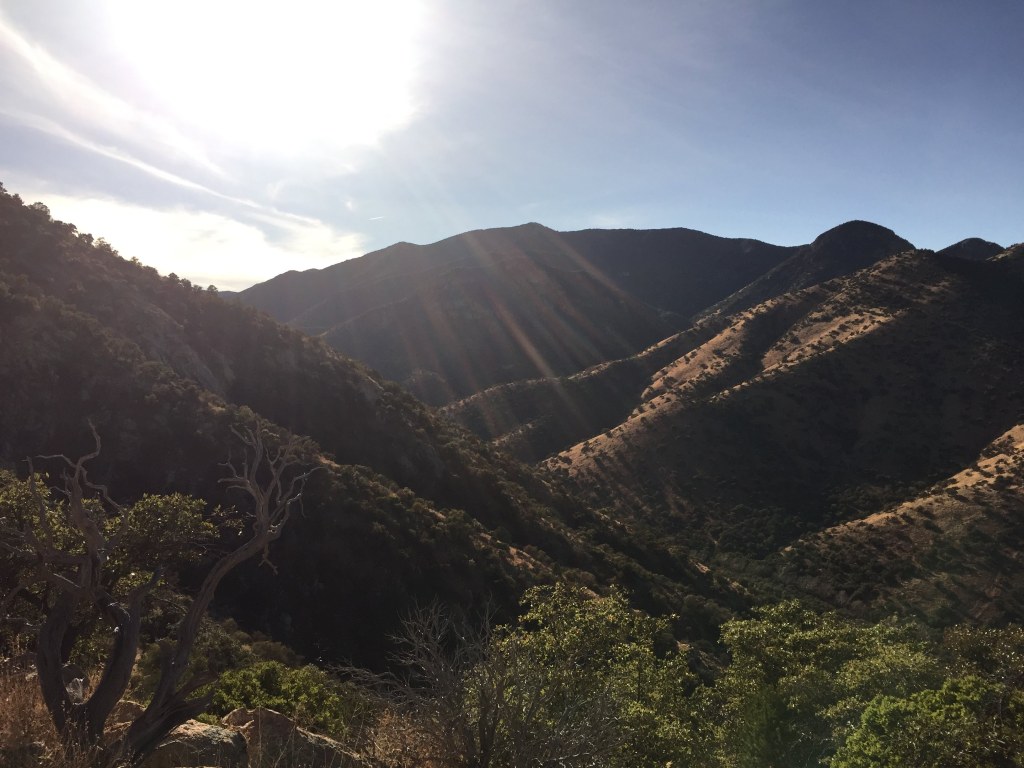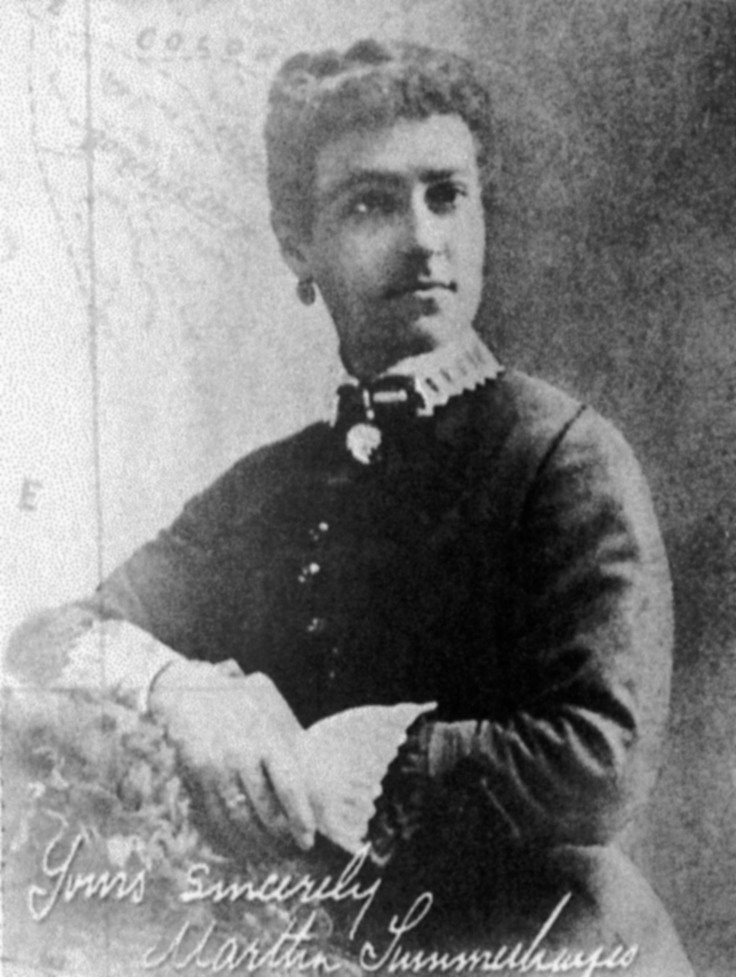In the last chapter of Vanished Arizona, Martha Summerhayes wrote: “I am glad to have known the army: the soldiers, the line, and the Staff; it is good to think of honor and chivalry, obedience to duty and the pride of arms; to have lived amongst men whose motives were unselfish and whose aims were high; amongst men who served an ideal; who stood ready, at the call of their country, to give their lives for a Government which is, to them, the best in the world” (249). To readers now, this summary of the Army might seem overly congratulatory. When Martha wrote these words, though, she was reflecting on a time in her life that memory and nostalgia had smoothed into idealized years of early marriage, motherhood, and grand adventures, all against the backdrop of soldiers’ devotion to duty and country.
However, Martha did herself a disservice in her idyllic summary of army life. It was not only the soldiers and officers who displayed the above-mentioned qualities, but also their wives.

Martha was one such woman who demonstrated devotion, duty, honor, and obedience to Army and to country in her years as an army wife. When she married her husband, John Wyer Summerhayes (Jack), in 1873, little could she have known that they would remain in the military until 1900. Martha was raised in a well-to-do Nantucket family and spent her young adulthood studying German literature, knowledge which did little to prepare her for life on the American frontier (9, 17). Her early experiences as an army wife were filled with naivety and misadventures, but yet her season of adjustment to the Army’s ways was just a small introduction to twenty-six years of adjustments and changes.
Martha’s experiences as an army wife in the late nineteenth century have great importance to history for three reasons. Firstly, Martha’s life was one of many that helped create a rich tradition of army wives’ selfless, courageous service to their families, their country, and to other spouses. As any military spouse can attest, learning from more seasoned spouses is unspeakably helpful (after all, how does one pack for a PCS? What about a TDY en route? What’s an FRG and should I volunteer? Who’s my PCM and how on earth does TRICARE work?) Martha’s life and written work helped younger wives in their own adjustments to the ways of the Army (1). Secondly, Martha’s book is valuable for the historiography of the American West and the last American Indians Wars. Her work adds to the literature on both of these topics the perspective of a woman attached to the Army who came to learn a great deal about the western climate and culture during her travels throughout the frontier. Finally, her book touches, if very briefly, on an army wife’s experiences during the Spanish American War. Thus, Vanished Arizona also has a place in the historiography of that brief conflict.

Additionally, Martha’s story is a special one for me personally. Though I have not had the same sorts of trials and adventures Martha experienced, there are parallels between her experiences with the Army and my own. Like Martha, I too originally hail from the East coast of the United States. After I married my husband, I joined him in the Midwest at Fort Riley, Kansas. After a somewhat rough introduction to army life there, we were next sent to the wilds of Arizona. The Army packed our belongings and then my husband and I drove the seventeen hours from Kansas to Fort Huachuca in cars overflowing with the rest of our things while our sweet rescue dog, Tammy, slept in the back seat.
When we entered the outskirts of Huachuca City, all the well-meant warnings I had received about how terrible Fort Huachuca was seemed like they must be true. Some run-down gas stations, a Dollar General or two, and a cafe that looked like cockroaches were its main clientele comprised the town’s chief attractions.* At the same time, though, I was blown away by the beauty of the majestic Huachuca Mountains. As my husband and I settled into our new home on post with our dog, I was surprised to realize how much and how quickly I was growing to love the untamed Arizona landscape (even as we endured altitude sickness for the first week!). Like Martha, I have grown to love and miss Arizona. Her story brings to mind a special time in my life when the Army helped me realize that I could grow to love a place I once thought I would dislike.

Throughout the rest of this series, I hope you will come to know and appreciate Martha as I have. Her story is fascinating, engagingly written, and worthy of continued appreciation. Stay tuned for Part 2 – Martha’s introduction to the Army!
*Huachuca City and Sierra Vista, AZ, also have some charming attractions! The longer I lived there, the more I realized that my initial impressions were far too harsh.
Bibliography
Summerhayes, Martha. Vanished Arizona: Recollections of the Army Life by a New England Woman. Scotts Valley, CA: CreateSpace Independent Publishing Platform, 2017. First published 1911.
Wikipedia. S.v. “Martha Summerhayes.” Last modified February 8, 2018. https://en.wikipedia.org/wiki/Martha_Summerhayes.

Great post! I’m curious to learn more about Martha Summerhayes’s life. I really enjoyed how you worked some of your own similar experiences into the writing.
LikeLike